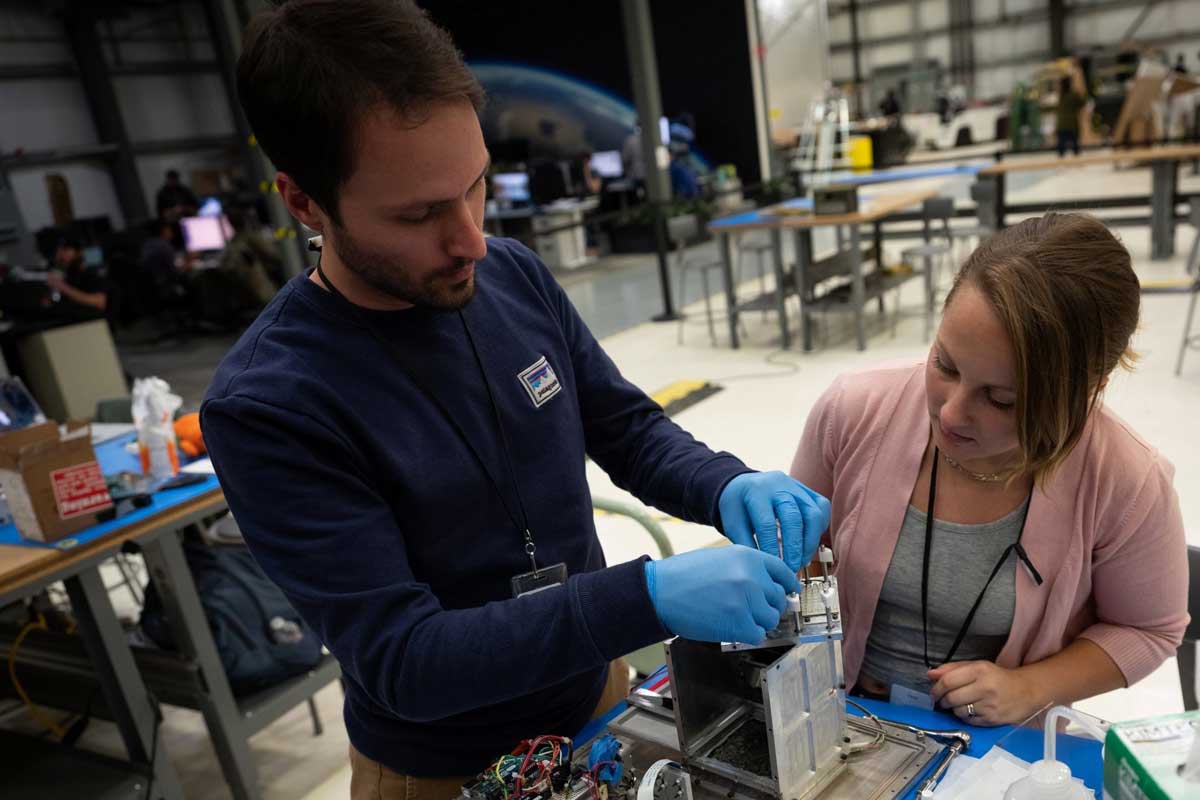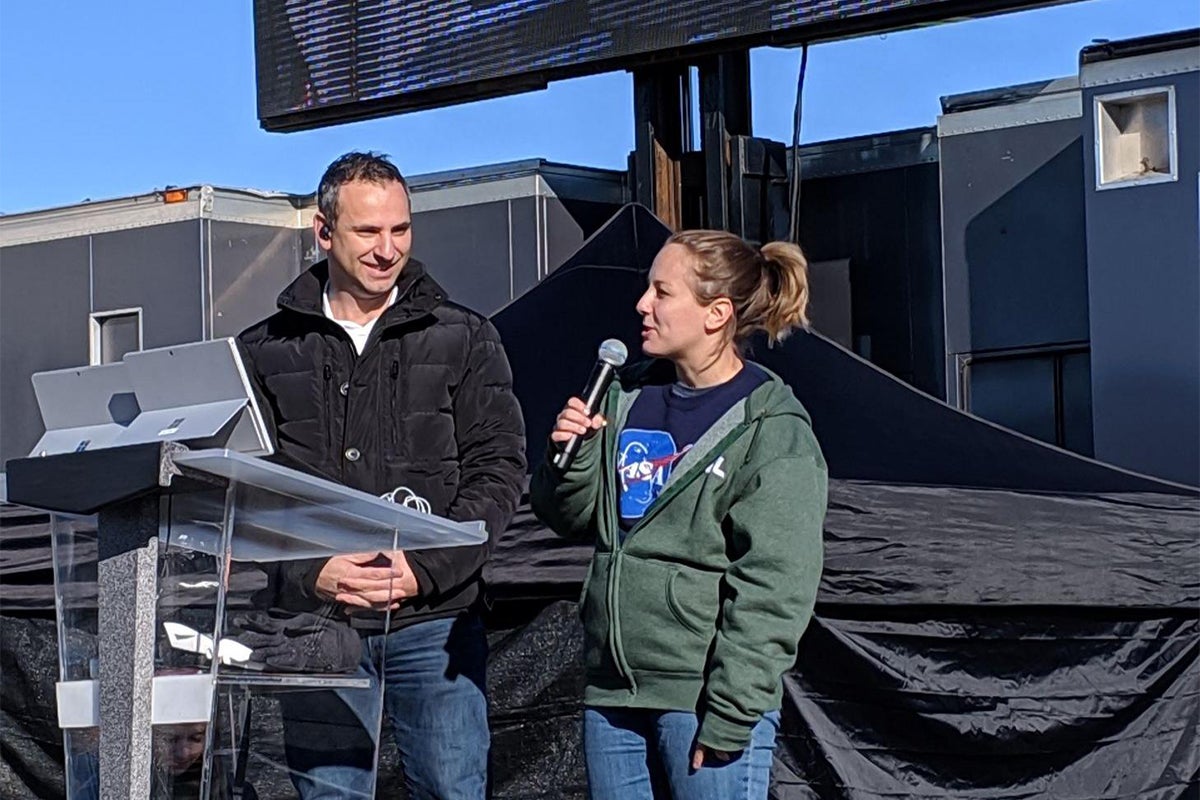UCF has done it again.
Another science experiment flew into space today aboard Virgin Galactic’s SpaceShipTwo, making it the third time in three months that UCF’s projects have flown into space.
In December, an experiment flew aboard Virgin Galactic’s maiden voyage into space. And in January, a similar experiment flew aboard Blue Origin’s New Shepard spacecraft. The experiments all center around the same question — how do dust particles ranging in size from about the width of a hair to about 2 centimeters behave in microgravity? The answers are important not only to help understand how planets were formed, but also to plan for other space missions to the dusty surfaces of asteroids and the Earth’s Moon.
“It’s just a funny coincidence that both rocket companies happen to be flying them at about the same time,” says Joshua Colwell, a physics professor. His team worked on the experiments.
This time Colwell and his colleagues who worked on the project followed the launch via Twitter because they were teaching or in meetings. Two of the students who worked on the project were in California for the week of the launch.
“We hope our experiment will provide valuable data on the dynamics of particle aggregation in the early solar system that leads to the formation of planetary bodies and the reaction of regolith to disturbances expected during asteroid sample return and lander missions to inform the development of safe operational procedures at these exotic sites,” says Stephanie Jarmak, a Ph.D. Candidate in the Department of Physics who worked on the project.
She and fellow Knight Cody Schultz ’18 watched the launch on site in the Mojave Desert. They, along with more than a dozen other students, worked on this experiment and others that have flown over the years. They will be pouring over all the data collected and reviewing the video captured back at UCF to see what they can learn from all three flights.
“We have observed several interesting aggregation events from data obtained during our previous two suborbital flights, and we are continuing to analyze this data to provide useful input to the planetary science and space exploration community,” Jarmak says.

This particular experiment is known as Collisions Into Dust Experiment, or COLLIDE. It is the same experiment that flew aboard Virgin in December. The second flight was to collect more data using a different type of simulated asteroid dust. This particular experiment is on its fifth trip to space. The first was in 1998 on a space shuttle flight. The project was selected for the flight as part of NASA’s Flight Opportunities program.
The research was funded by NASA, UCF and Space Florida.
Colwell has now had experiments fly into space eight times, including on space shuttle flights and payloads to the International Space Station.
This marks the fifth experiment in space for co-principal investigator Adrienne Dove, an assistant professor in UCF’s physics department.
Although she wasn’t there for the flight today, she was in California last week to help get the experiment ready for launch.
“It was my first time out at Virgin Galactic’s site,” Dove says. “It was amazing to see WhiteKnightTwo and SpaceShipTwo in person. It was great working with the folks at VG and seeing how everything is progressing. It’s fantastic to see our experiments fly — each time we’re learning new things about operations, and we’re getting some really unique science results.”




